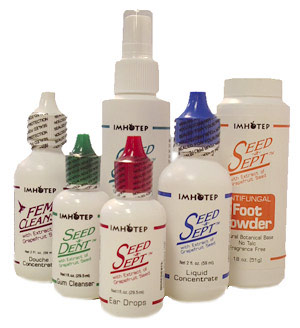
GRAPEFRUIT SEED EXTRACT PRODUCTS
Broad Specturm Antiseptics
Grapefruit Seed Extract was originally developed by Jacob Harich (1919-1996) as an antiparasitic agent. Dr. Harich, a German researcher who immigrated to the U.S., convinced researchers at the University of Florida at Gainesville to experiment with the use of grapefruit extract as an alternative to then-current chemicals for the protection of fruit and vegetables from mold damage. They were impressed by the ability of the extract to inhibit the growth of bacteria, mold, and fungi as well as other organisms. A modified form of the extract became a commercial success under the name Citricidal. Tests conducted by the U.S.D.A. indicated that Citricidal was also effective in inhibiting pathogenic viruses in animals. Since the mid-1980s, the production team at the Citricidal company worked closely with Dr. Harich to improve the manufacturing process, open new facilities, and expand the use of Citricidal beyond it's original application.
Although described simply as Grapefruit Seed Extract, Citricidal is more complex: it is synthesized from the polyphenolic (flavonoid) compounds found in the mixture of grapefruit seeds and pulp that is left over from production of grapefruit juice. The manufacture is described as follows:
- Grapefruit pulp and seed is dried and ground into a fine powder.
- The powder is dissolved in purified water and distilled to remove the fiber and pectin.
- The distilled slurry is spray dried at low temperatures forming a concentrated flavonoid powder.
- This concentrated powder is dissolved in vegetable glycerine and heated.
- Food grade ammonium chloride and ascorbic acid are added, and this mixture is heated under pressure. The amount of ammonium chloride remaining in finished Citricidal is 15-19%; the amount of ascorbic acid remaining is 2.5-3.0%.
- The ammoniated mixture undergoes catalytic conversion using natural catalysts, including hydrochloric acid and natural enzymes. There is no residue of hydrochloric acid after the reaction.
- The slurry is cooled, filtered, and treated with ultraviolet light.
|
The main active components in the finished product are a group of quaternary ammonium chlorides, including benzethonium chloride (illustrated here) or a compound nearly identical to it, that make up about 8-17% of the product. Benzethonium chloride is a well-known synthetic antiseptic agent; it is not added to the grapefruit extract, but is formed from the original grapefruit flavonoids by the ammoniation process. An acute oral toxicity study was performed on Citricidal, demonstrating that it is safe; there have been no reports of toxicity from long-term use of Citricidal. | 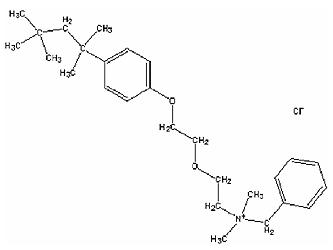 benzethonium chloride |
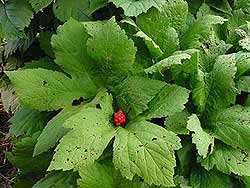 Goldenseal |
Seed-A-Sept Spray. Apply topically to irritated skin; in addition to Citricidal, the formulation includes four tinctures: calendula, hypericum, plantain (pictured right), and goldenseal (pictured left) to help heal damaged skin. The bottle provides 4 fluid ounces. | 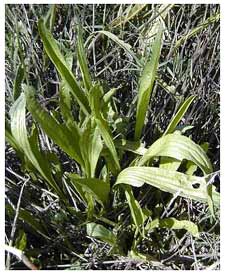 Plantain |
Fem-Cleanse. To prepare a douche, combine one capful of this special preparation of Citricidal that includes goldenseal, calendula, yellow dock, red clover, and red raspberry leaf extracts in a glycerine base with 2 cups of water. The bottle contains 2 fluid ounces.
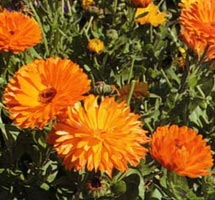 Calendula |
Seed-A-Dent. Citracidal is combined with extracts of plantain, white oak bark, hamamelis (witchhazel), and calendula (pictured left) in a glycerine base. It is used by applying to the toothbrush along with toothpaste; it can also be diluted in water for use as a mouth wash. The bottle contains 1 fluid ounce. Ear Drops. Citricidal is combined with mullein (pictured right) and plantain, both recommended for ear infections in Western herbalism. Just 1-2 drops applied to the affected ear, repeated 1-3 times per day. The bottle contains 1 fluid ounce. | 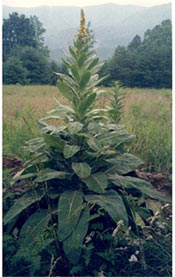 Mullein |
Antifungal Foot Powder. Citracidal is combined with a derivative of castor bean oil (undecylenic acid, a fatty acid with potent anti-fungal properties) and slippery elm in a base of cassava root powder (a starch powder). The bottle contains 1.8 ounces of powder
.